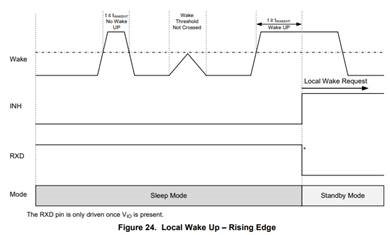Team,
The datasheet mentions that the WAKE “terminal triggers a LWU on either a low-to-high or high-to-low transition since it uses a bi-directional input threshold (falling or rising edge)”. In the case we consider a low-to-high configuration and use vehicle ignition as the WAKE source, how would we turn Inhibit off? The only way I see to do this is to drive nSTB low via the MCU.
Thanks
Viktorija



